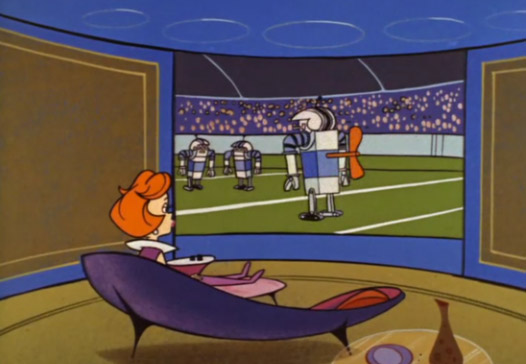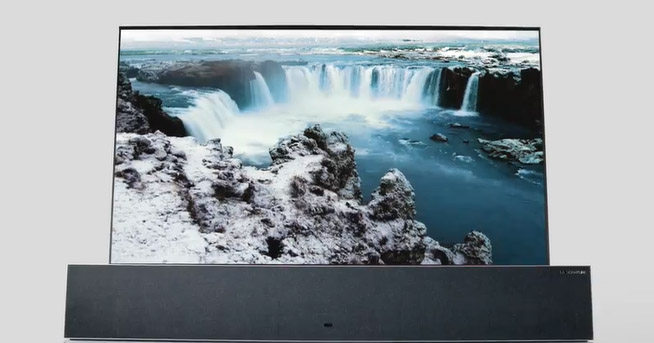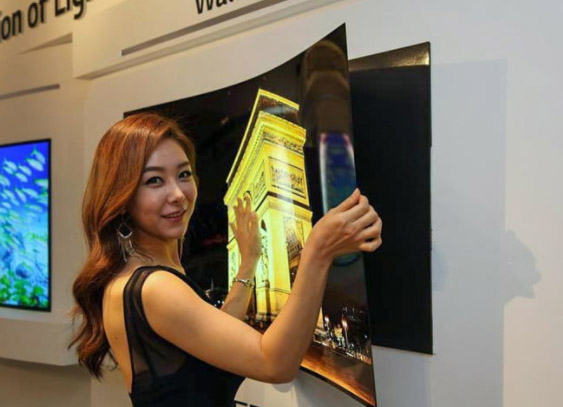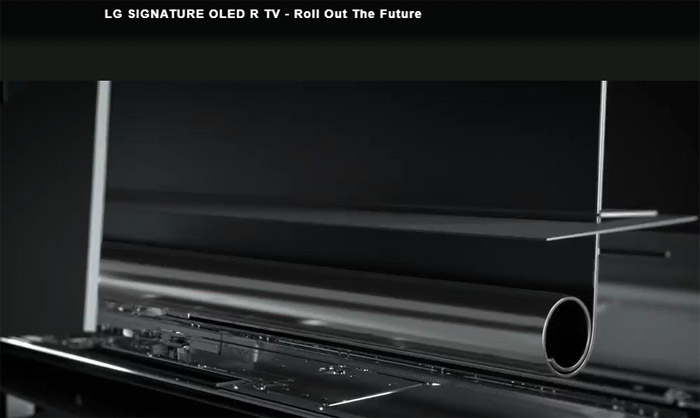
Everywhere today, advertising bombards us with organic this, organic that. But organic televisions? In our not-so-distant future, this technological advance will change the way RVers watch television. Available today, the most popular model rolls up and down remaining out of sight until use. You no longer stare at a black screen taking up space in your RV, regardless of its location. Read on, there’s more to come.
The advent of OLED Technology

LED/LCD flat screen TVs require a light source or back lighting for viewing. In contrast, OLED or organic light-emitting diode (OLED or organic LED) is a giant leap in TV technology. The technospeak for this television is organic electroluminescent (organic EL) diode, which is a light-emitting diode (LED) in which the emissive electroluminescent layer is a film of organic compound that emits light in response to an electric current. This organic layer is situated between two electrodes where one of these electrodes is transparent. What does that gobbledygook mean? Simply, OLEDs emit their own light.

We witnessed its beta version
My spouse and I first observed a beta version of organic LEDs at the Consumer Electronics Show years ago. We listened to cinematic sound emanating from an extremely thin polyurethane film, some 60 thousandths (0.060”) thick. While it was impressive, it didn’t fit in our wheelhouse at the time. But since my spouse is an electrical and manufacturing engineer in the semiconductor/chip design world, he keeps up with technology. After reading an engineering article he remarked to me, “OLED technology is transforming television and screen displays.”

We’ve come a long way
The last ten years have shown dramatic advances. Many RVers have ditched the bulky, heavy TVs initially built-in their RV installing flat screens. From the introduction of the first flat screen in 1996, we’ve witnessed major changes in size and thickness… LCD and plasma screens… 4k and 8k pixilation.… QLED and now OLED. Over previous screen displays, OLED boasts some 1.07 billion colors. Aside from price, the distinction above all else is OLED’s vividness of color, especially that inky black of deep space lack of color. And because each pixel is a self-contained organic light-emitting diode, these pixels eliminate the need for backlight. They generate 100% of the light/or lack of light needed for dramatic color. Many LED/QLED models experience off-angle viewing. If you’re not directly in front, you may see shading, a disadvantage compared to OLEDs.

How will this affect RVers?
For instance, LG’s rollable model fits into a four-inch stereophonic box by one of several lengths – 65 to 99 inches. It’s portable and a space saver. In your RV, it would be like experiencing your own jumbotron movie theater. Other OLED models are super thin that adhere to a window or wall, again saving space. Another model is transparent when not in use. Right now, LG’s most popular model selling is their 65-inch Signature rollable. Full of stereophonic sound which will couple with other devices (speakers) to give you theater quality surround sound. They are shipping units but currently the price of $100,000 is way too high for my pocketbook! As with all electronic devices, with time and competition, the price may be realistic.

Like the Jetson’s
Just think, now you can have a TV where you want it. They’re lightweight and easy to carry. And if you have a flat spot that you aren’t using, you can purchase a stick-on the wall or ceiling TV which has all the features of the roll-up.
Read the edited article published September 10, 2021 here: Roll-up, stick-on TVs are coming. RVers, get excited! – RV Travel
Kate Doherty has been writing for more than 30 years in technical and general media. In her previous business, she and her spouse dealt with special projects within the military/government sector. Recently she published “Masquerade: A Logan Scott Novel” under the pen name Bryan Alexander, a thriller now available in eBook and paperback on Amazon. It’s a page-turner!